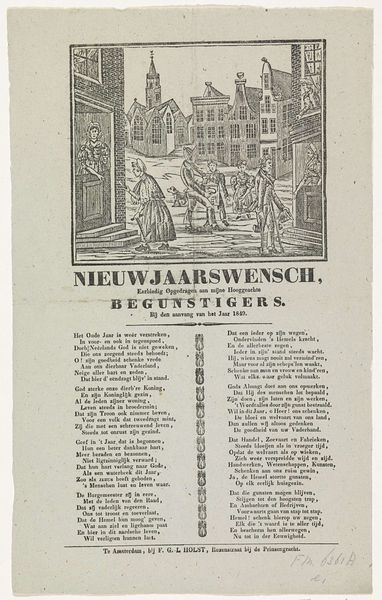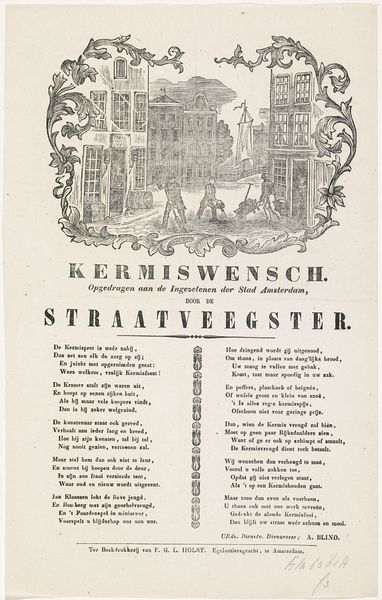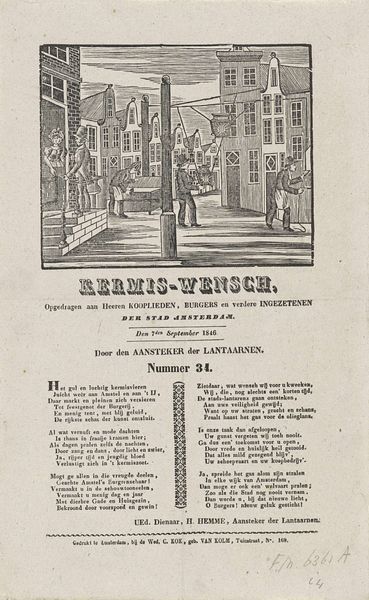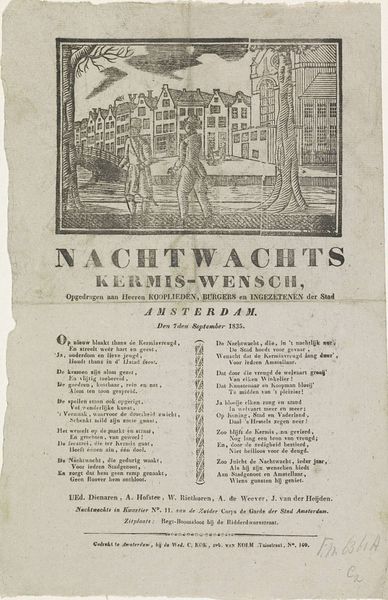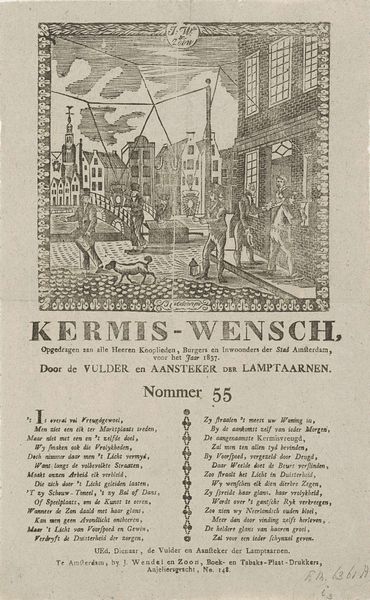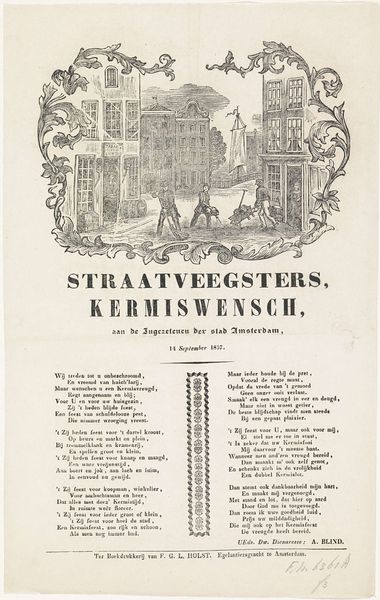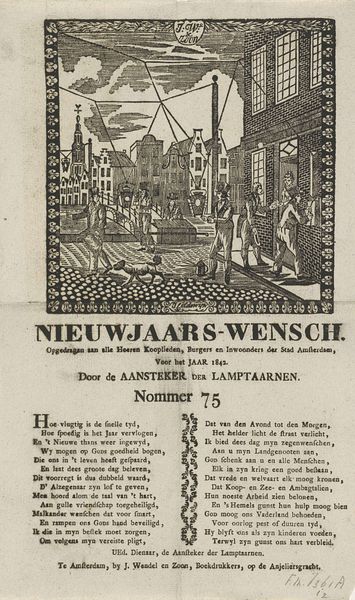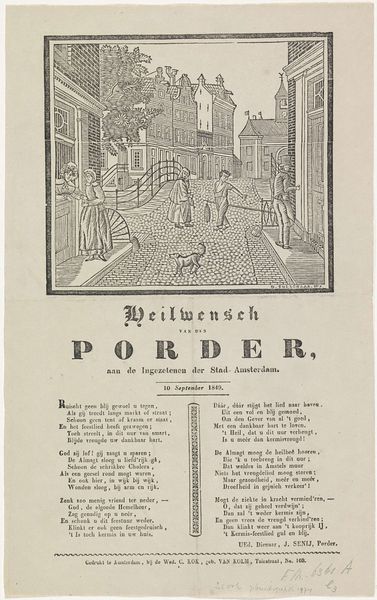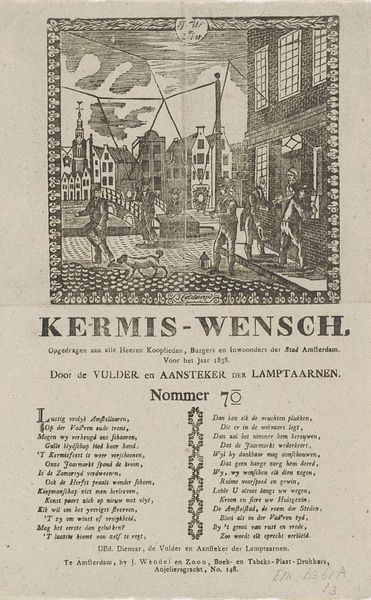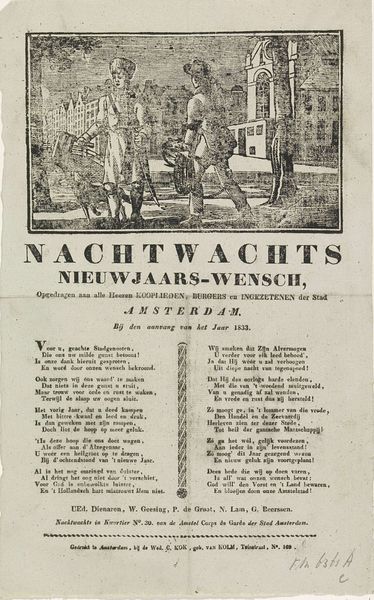
drawing, print, paper, ink, engraving
#
drawing
#
narrative-art
#
dutch-golden-age
# print
#
paper
#
ink
#
folk-art
#
cityscape
#
genre-painting
#
engraving
Dimensions: height 334 mm, width 207 mm
Copyright: Rijks Museum: Open Domain
Curator: This intriguing print, currently held in the Rijksmuseum, is entitled "Kermisprent van de Amsterdamse straatvegers, 1850," made in the year 1850. The artist, sadly, remains unknown. It's rendered with ink on paper through engraving. What catches your eye about this piece? Editor: Immediately, it’s the crispness and the neat division of space that holds my attention. There's an almost theatrical stage-like quality to the street scene—very organized, very measured. Even the perspective, although present, feels somewhat flattened, lending a quality of almost abstracted precision to the scene. Curator: Indeed. The print commemorates the street sweepers of Amsterdam, wishing them well during the kermis, or fair. Observe how the workers become symbols of civic order and communal prosperity in Amsterdam. Editor: I see that! It's quite clear from the arrangement how the visual organization—the architecture receding, the carefully placed figures—lends a sense of structured life to the image's narrative. Is this typical for works celebrating a town’s workforce in that era? Curator: To a degree, yes. However, there's an added layer here. Consider how the verses beneath the illustration link the sweepers' labor to the prosperity of everyone—from the regent to the common folk. It reinforces the cultural ideal of social harmony. It highlights how each part is meant to play in the maintenance of the community’s cultural equilibrium. Editor: So the engraving does more than document; it presents an ideal of labor's harmonious fit. Fascinating how this idealized harmony uses the rigid composition to communicate power, order, and civic virtue. I'm drawn to the tension created by the artist by including some elements which seem incongruous and playful, such as the way in which figures interact, as it allows the image to suggest that work could also be experienced with happiness. Curator: Yes, the print reveals a carefully constructed symbolic order designed to integrate both individual happiness with larger social narratives of civic identity, cultural stability, and the value of even the most common of occupations. It offers us an intimate glimpse into the cultural psyche of Amsterdam during that time. Editor: This artwork initially read as a simple tableau of urban life, but by the end of our discussion I recognize that its precise design creates cultural significance.
Comments
No comments
Be the first to comment and join the conversation on the ultimate creative platform.
